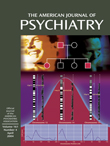To the Editor: On the basis of the limited data available, Dr. Marzuk et al. concluded that the suicide rate of police officers may be lower than the suicide rate of the New York City population. However, there are several concerns about the study. Since death certificates were used, it is likely that the number of police suicides was underreported. Although the authors adjusted for accidental deaths and undetermined deaths (potential suicides), the graph does not include this information. In addition, some reported police homicides may actually be suicides. A suicidal officer may expose himself or herself to a life-threatening situation that also allows an opportunity to spare peers and family the aftermath of a suicide. The entire New York City population, which includes some who are jobless, have significant legal histories, or who have severe mental illness or personality disorders, is not an appropriate comparison group. These factors all increase the risk of suicide. In addition, most officers live outside the city, which decreases their risk of suicide.
Violanti and colleagues
(1) compared police officers to other municipal workers and reported that the officers had a higher suicide rate and lower homicide and accidental death rates. An analysis of reported deaths in municipal workers demonstrated that police suicides (including likely suicides such as gunshot wounds to the head or drowning) were more likely to be reported than nonsuicides
(2). In a department of about 40,000 officers with about five to six reported suicides per year, reclassifying just two missed suicides per year would raise the reported rate from 15 in 100,000 to 20 in 100,000, higher than the rate in the New York City population.
A New York City Police Department employment screening includes administration of a psychological interview, an MMPI, a California Personality Inventory, and a Cornell Index and the gathering of prior legal history, work history, and relationship history. Many high-risk candidates (e.g., with psychotic symptoms, severe mood disorder, poor work history, severe personality disorder, or extensive legal history, each of which is a risk factor for suicide) are not hired. If similar people were excluded from the New York City comparison group, the city’s suicide rate would be much lower than reported. If the city population was “adjusted” to be more comparable to police officers, we are confident that the police department’s suicide rate would be significantly higher than the appropriate comparison group.
We are concerned that the results presented may negatively affect police officers. Fears of stigmatization, job loss, or perceptions of personal weakness already are barriers that officers must overcome. If they are led to believe that suicide is not a problem for law enforcement personnel, they may see their own suicidal ideation as a personal weakness or failure and become less likely to seek assistance.

